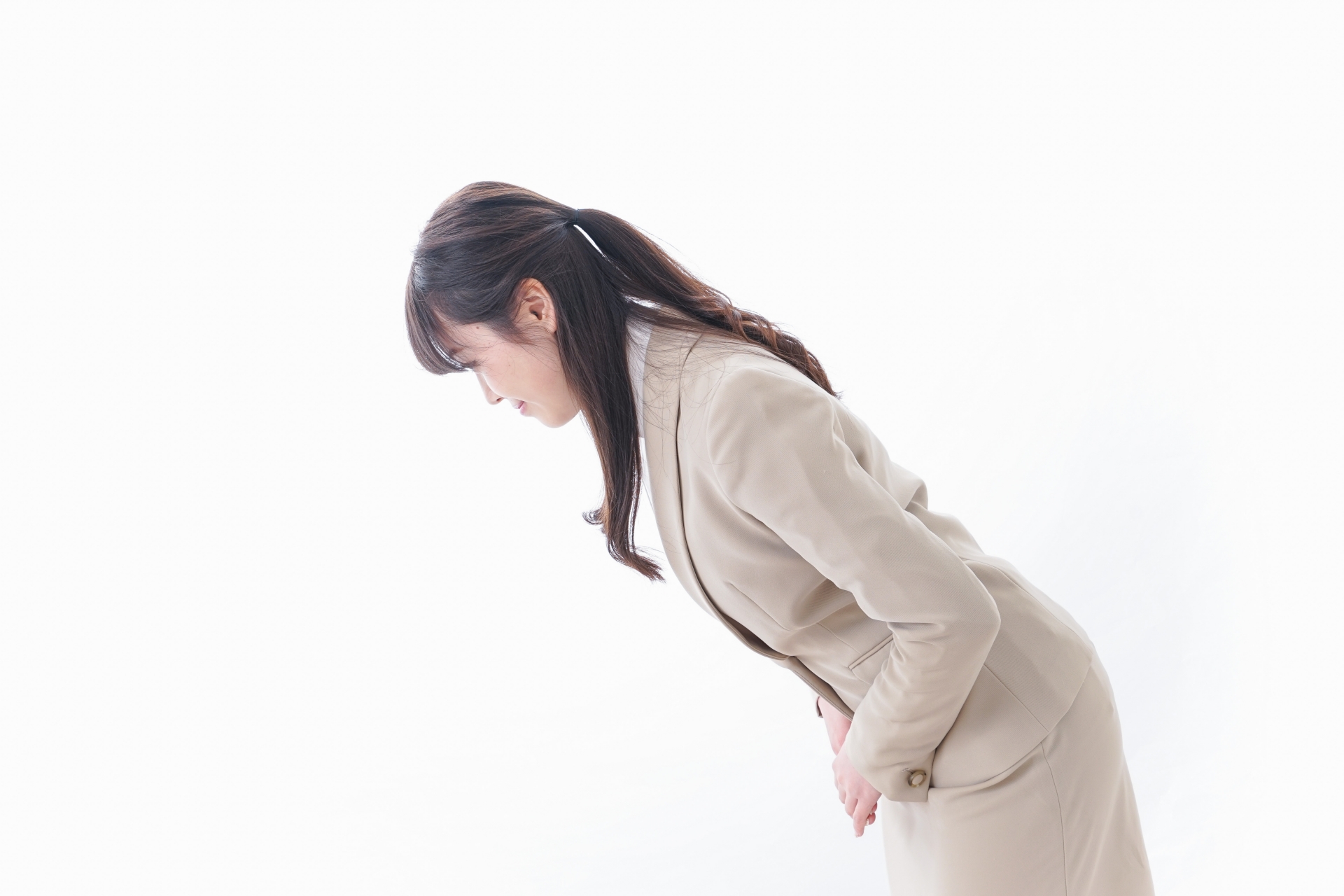Bowing is an integral part of Japanese culture, serving as a universal gesture of respect, gratitude, apology, and greeting. For visitors or professionals navigating social interactions in Japan, understanding bowing etiquette is key to avoiding unintentional rudeness. This article breaks down the various types of bows, appropriate contexts, and modern interpretations to help you bow with confidence and cultural sensitivity.
Understanding the Cultural Importance of Bowing in Japan
Bowing (ojigi or aisatsu) in Japan is more than a simple gesture—it’s a fundamental form of communication deeply rooted in the country’s societal values and historical traditions. While Western cultures often rely on verbal greetings or handshakes, bowing in Japan conveys a wide range of meanings including respect, gratitude, apology, humility, and reverence.
The origins of bowing can be traced back to religious rituals and samurai customs, where lowering the body symbolized social hierarchy and spiritual purity.
In modern Japanese society, bowing appears in a variety of settings. It is used as a polite greeting among friends or acquaintances in everyday life, as a hierarchical indicator in business contexts, and as an act of reverence at religious sites like shrines and temples. Understanding these nuances allows travelers and professionals to interact respectfully and avoid cultural misunderstandings.
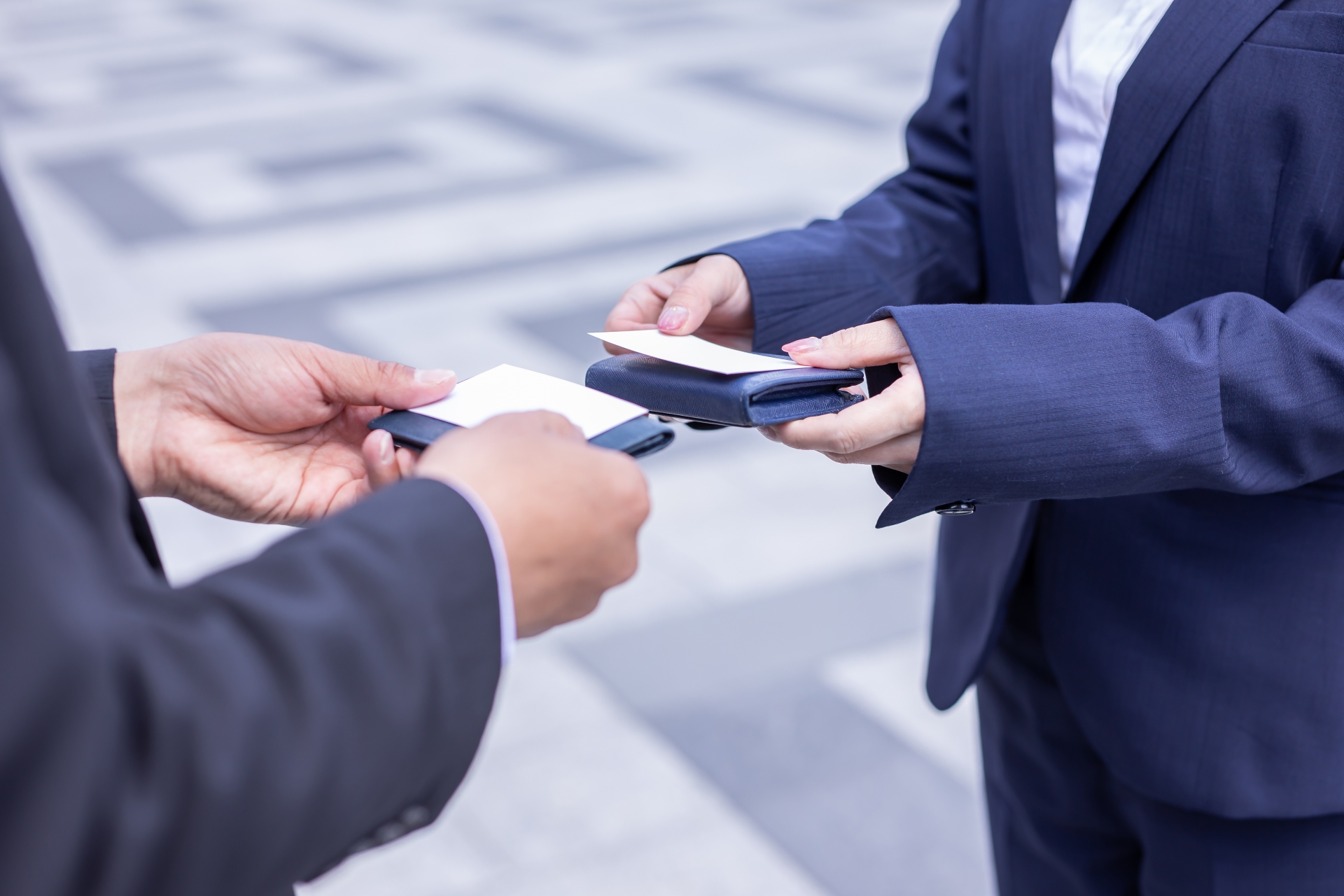
Types of Bows and Their Meanings
Japanese bows are categorized based on the angle of the bow and the context in which they are used.
| Type | Angle | Common Situations |
| Eshaku | ~15° | Light greeting, passing by colleagues |
| Keirei | ~30° | Business situations, semi-formal interactions |
| Saikeirei | ~45° | Deep apologies, showing respect to superiors |
Each type of bow carries distinct cultural significance and should be used appropriately.
Eshaku (15 Degrees)
Eshaku is the most casual form of bowing, typically performed at a 15-degree angle. It is commonly used when passing someone in a hallway or greeting acquaintances. It conveys a light sense of respect and is frequently used in daily settings. A quick nod of the head while maintaining a modest demeanor is sufficient.

Keirei (30 Degrees)
Keirei is the standard bow for formal settings and is performed at a 30-degree angle. It is widely used in business situations, such as greeting clients, starting or ending meetings, and expressing thanks. The movement should be smooth and paused for a few seconds. Poor timing or insincerity can be interpreted as disrespect, making it essential for business professionals to master this form.
Saikeirei (45 Degrees)
Saikeirei is the deepest and most respectful bow, performed at a 45-degree angle or more. It is used in very formal situations, such as serious apologies, deep gratitude, or when addressing someone of significantly higher status. Maintain a straight posture, lower the head slowly and deeply, and express sincere emotion. Though rarely used, it’s essential to understand this form for crucial occasions.
How and When to Bow in Daily and Business Life
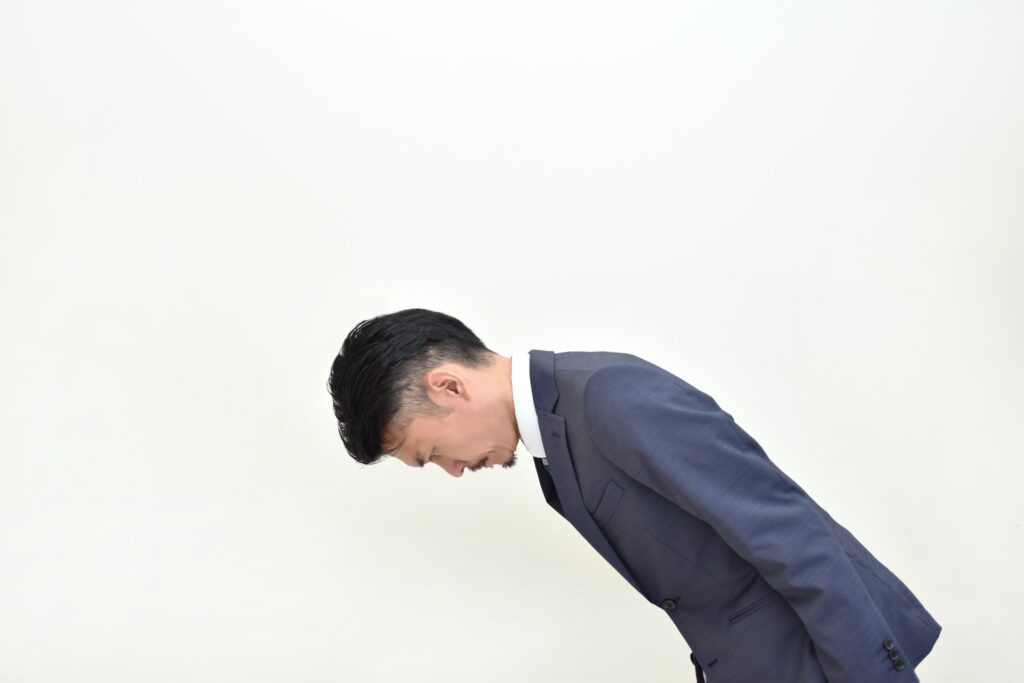
Proper bowing involves three core elements: posture, timing, and sincerity. Stand with your feet together and back straight. Men should place their hands at their sides, while women should clasp their hands in front. Avoid eye contact during the bow, lowering your gaze naturally to demonstrate humility.
Bowing is used during greetings, thanks, apologies, and requests. In business settings, it often marks the beginning and end of meetings or accompanies the exchange of business cards. Always bow from the waist and remain silent while bowing.
Bowing in Common Situations
- Greetings: A light eshaku is sufficient.
- Thanks: Say “arigatou gozaimasu” with a keirei.
- Apologies: In the case of a saikeirei, use the “separation bow” (bunri-rei), where you express the words first, such as “moushiwake gozaimasen,” followed by the bow.
Do: Bow both before and after interactions. Don’t: Smile, laugh, or wave while bowing.
Business Etiquette for Bowing
- Entering the office: Perform a keirei upon entry.
- Meeting clients: Bow deeper if the client is of higher status.
- Exchanging business cards: Use both hands and bow before and after the exchange.
- Departing: Perform a final keirei when leaving.
Minor mistakes are generally forgiven, but awareness and effort are appreciated.


Proper Hand Position During a Bow
- Men: Hands should rest naturally at the sides.
- Women: Hands should be lightly clasped in front, with fingertips aligned.
Avoid:
- Hands in pockets
- Arms crossed
- Fidgeting or adjusting clothes while bowing
A composed posture conveys respect and discipline.
Common Mistakes by Foreigners (and What’s Acceptable)
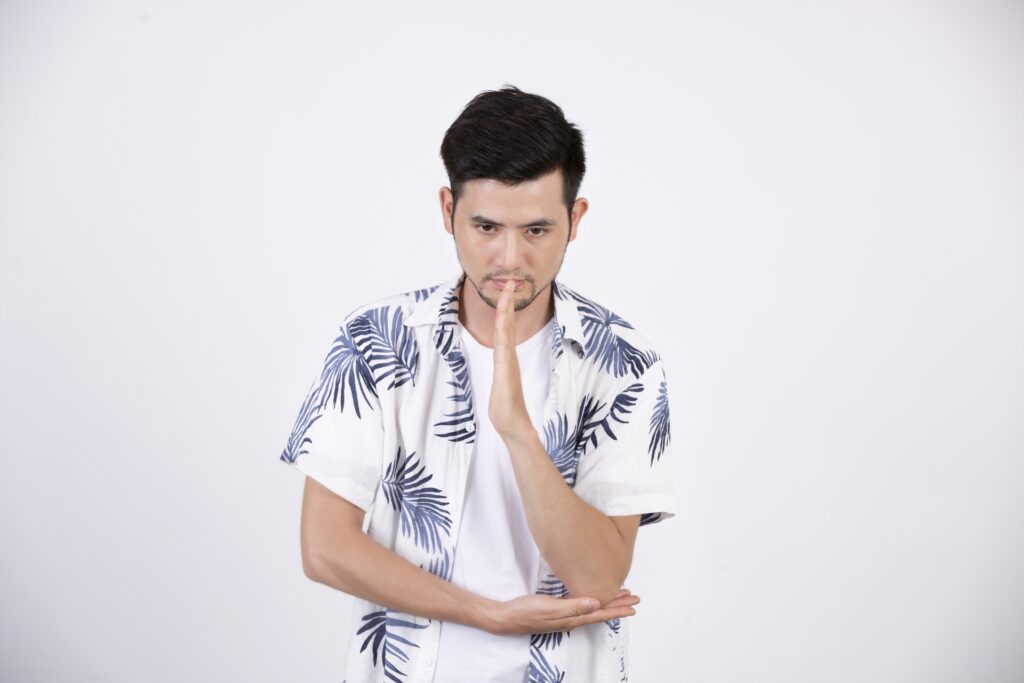
Foreigners often make bows that are too deep or poorly timed. Excessive depth may appear unnatural, and speaking or shaking hands while bowing can create confusion. Take a brief pause before and after the bow to maintain composure.
Fortunately, Japanese people appreciate sincere effort, and small errors are rarely taken seriously. Observing those around you and showing genuine respect is most important.
What Not to Do
- Bowing while laughing
- Bowing while walking
- Hands in pockets or arms crossed during the bow
- Jerky or unnatural movements
Is It Rude to Bow and Shake Hands Simultaneously?
Generally, bowing expresses respect, while handshakes symbolize friendship. Since they serve different purposes, performing them simultaneously may lead to confusion or discomfort—especially in business contexts.
In a first-time meeting, it’s best to shake hands first, then bow lightly. Depending on the situation, doing only one may be more appropriate. Observe the other person’s actions and respond accordingly.
Separation Bow vs. Simultaneous Bow
When combining spoken words with a bow, it’s important to distinguish between “separation bow” (bunri-rei) and “simultaneous bow” (douji-rei).
- Separation Bow (Bunri-rei): Speak first, then bow. This is appropriate for formal or serious contexts, such as deep apologies.
- Example: Say “moushiwake gozaimasen,” then bow deeply.
- Simultaneous Bow (Douji-rei): Speak and bow at the same time. Suitable for casual greetings or light expressions of gratitude.
- Example: Say “arigatou gozaimasu” while performing a light eshaku.
In business or formal settings, separation bows are preferred, while simultaneous bows are acceptable in informal contexts. Adapt based on the situation.
The Changing Nature of Bowing in Modern Japan
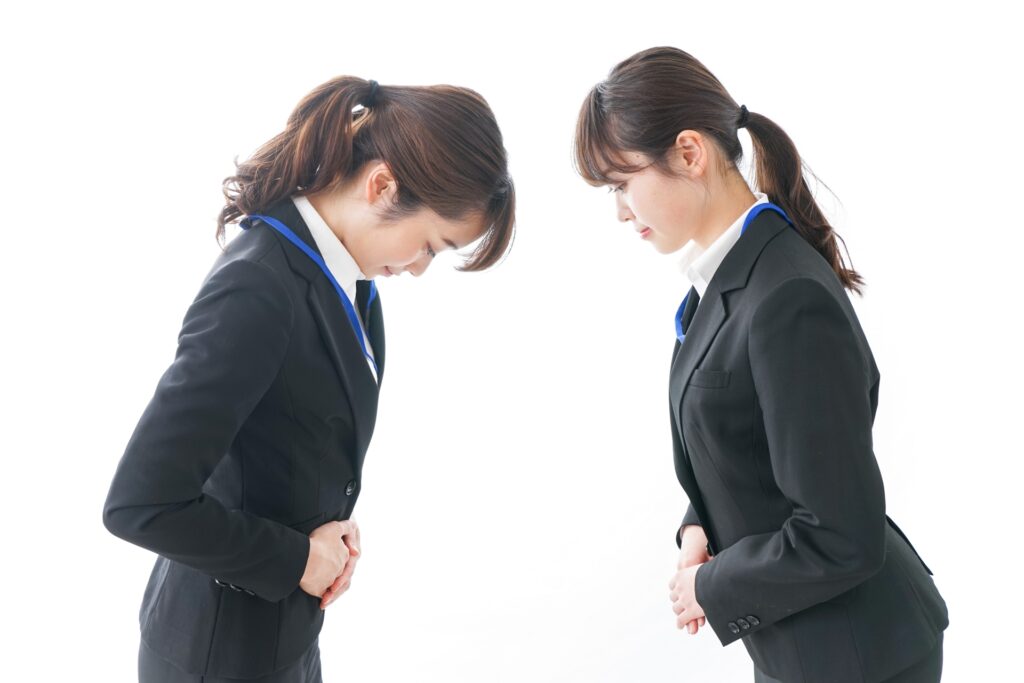
Among younger generations and in urban areas, bowing has become more casual. Workplace flexibility and exposure to global culture have reduced the formality of greetings. Light nods or waves among friends are increasingly common.
Nonetheless, bowing remains an essential form of respectful communication. For visitors to Japan, it’s safer to err on the side of formality.
Bowing in Pop Culture: Anime and Dramas
Media often exaggerates bowing for dramatic or comedic effect. For example, anime characters may prostrate themselves on the floor during apologies. While symbolic, these depictions do not reflect everyday reality.
Still, pop culture can be a helpful introduction to Japanese etiquette—if viewers understand the difference between fiction and real-life practices.
Conclusion: Bow with Confidence and Cultural Sensitivity
Learning how to bow properly in Japan demonstrates respect for its culture and customs. Perfect technique isn’t required; sincerity and effort matter most.
Whether visiting a shrine, attending a meeting, or greeting new acquaintances, bowing is a powerful symbol of humility and understanding.
Focus less on rigid form and more on heartfelt intention. With the insights from this guide, you’ll be ready to bow with confidence and cultural awareness.

